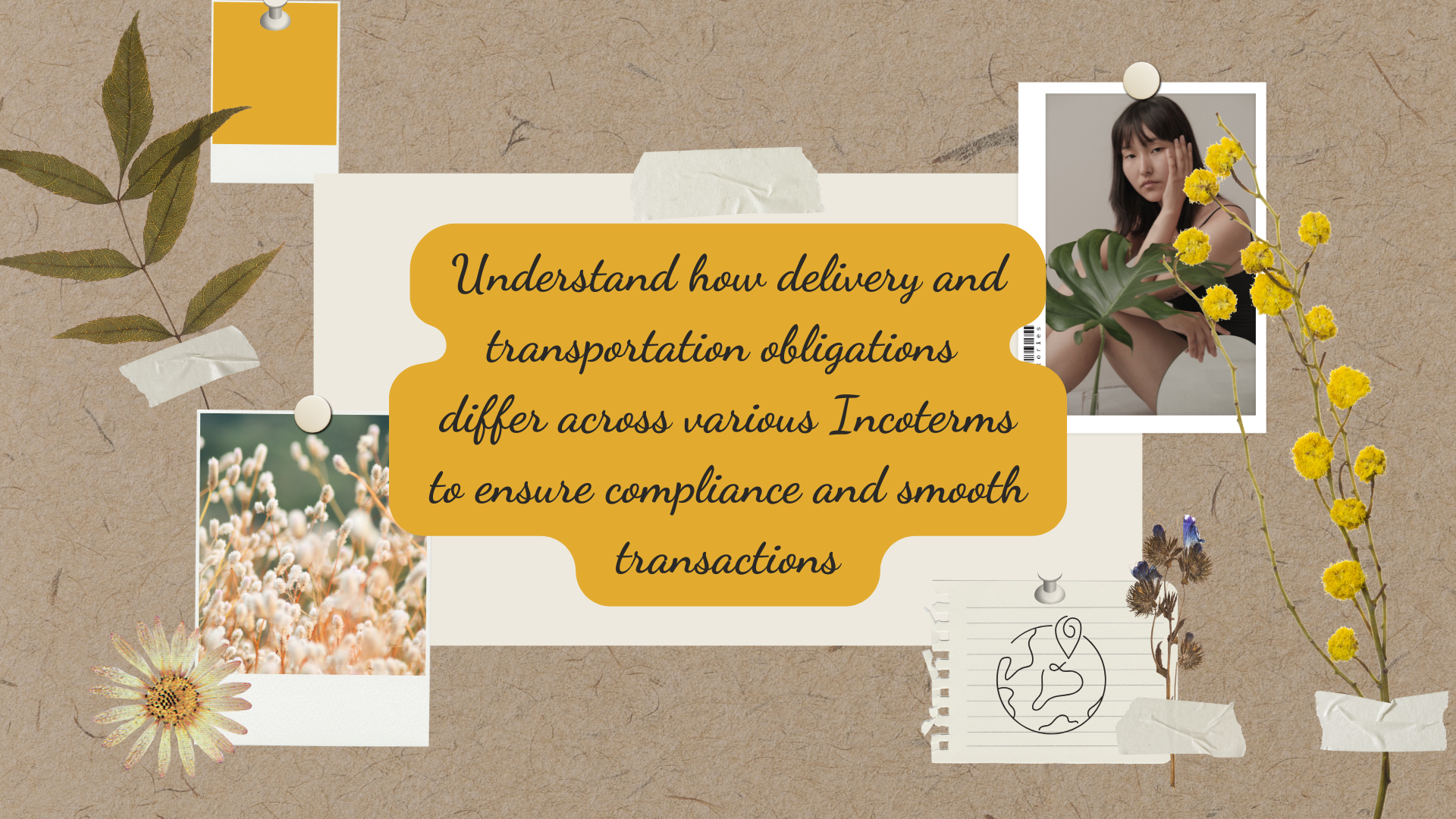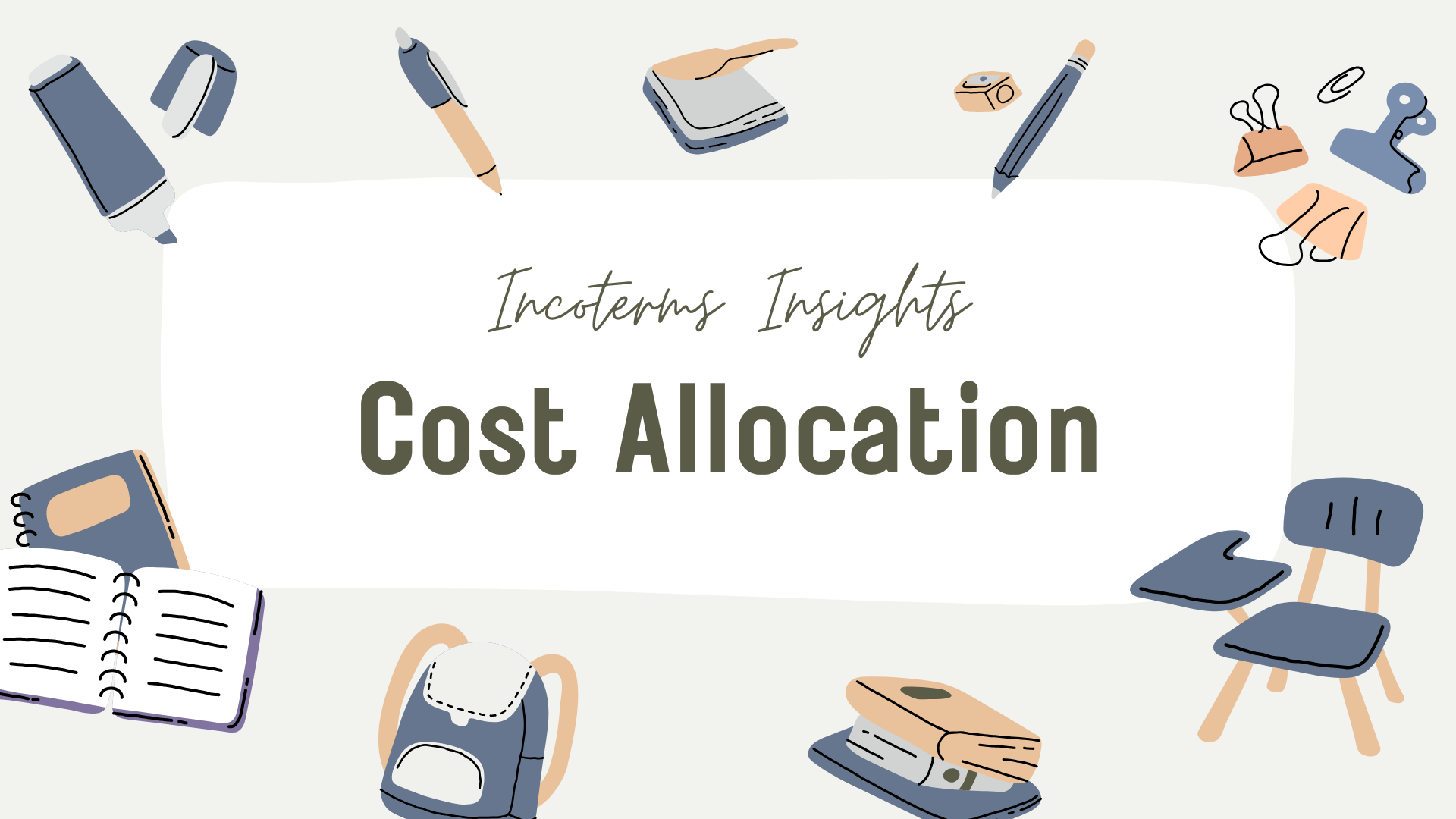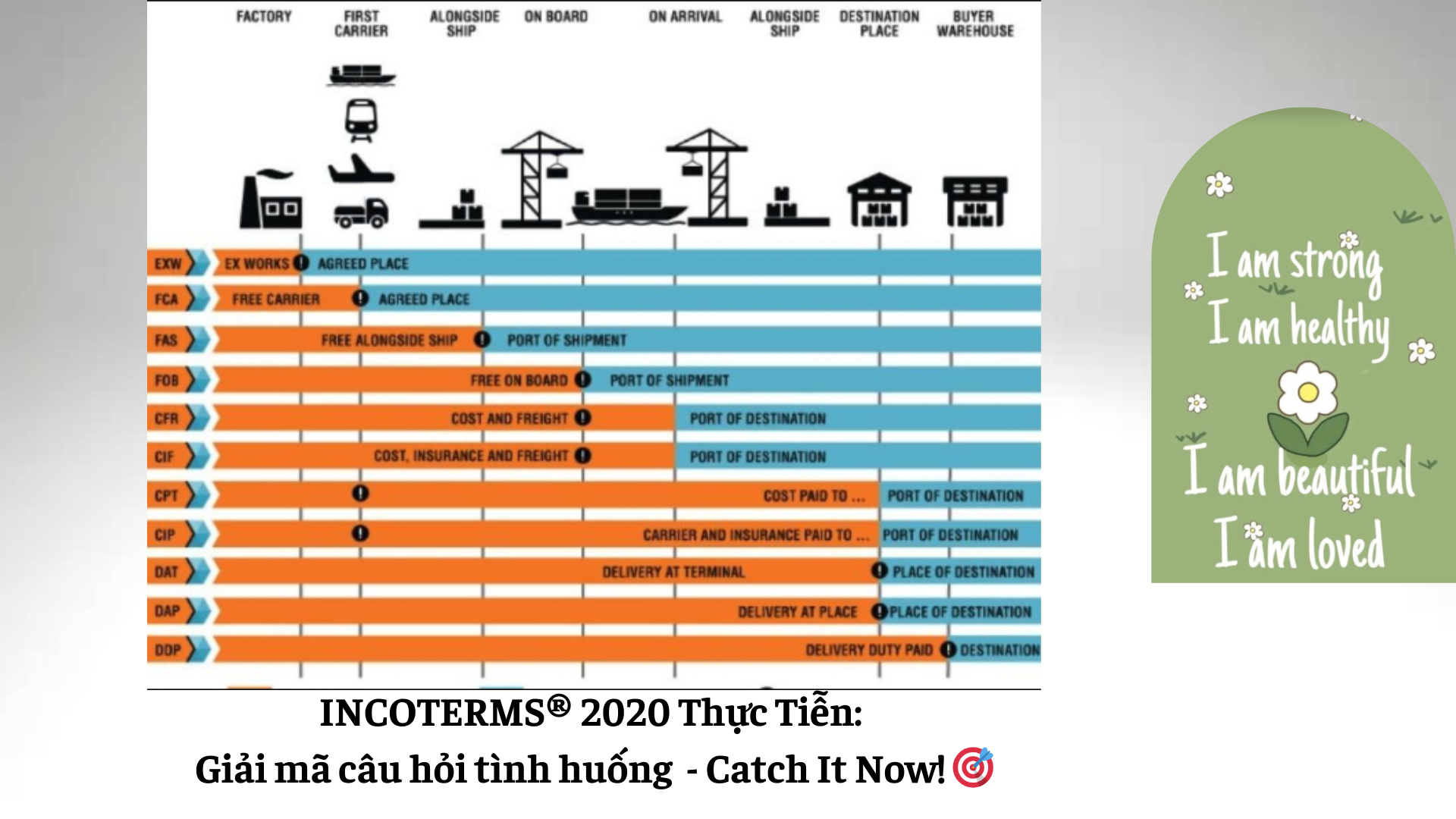How do Delivery and Transportation obligations vary across different Incoterms?
Trong thương mại quốc tế (In international trade), việc hiểu rõ các nghĩa vụ giao hàng và vận chuyển (understanding delivery and transportation obligations) là yếu tố then chốt để đảm bảo giao dịch diễn ra trơn tru (is crucial for both buyers and sellers to ensure smooth transactions). Incoterms đóng vai trò quyết định trong việc xác định (Incoterms play a vital role in defining) ai chịu trách nhiệm về chi phí, rủi ro và các thủ tục liên quan đến việc vận chuyển hàng hóa (who is responsible for the costs, risks, and logistics of transporting goods from the seller to the buyer). Từ điều khoản EXW, khi người mua đảm nhận hầu hết trách nhiệm (From EXW, where the buyer assumes almost all responsibilities), đến DDP, khi người bán lo liệu toàn bộ quá trình (to DDP, where the seller handles everything), mỗi Incoterm đều đưa ra các quy định cụ thể (each Incoterm outlines specific obligations for delivery and transportation). Vậy các nghĩa vụ này thay đổi như thế nào giữa các điều khoản (But how do these obligations vary across different Incoterms) và doanh nghiệp cần cân nhắc những gì khi lựa chọn (and what should businesses consider when choosing the right one)? Bảng Câu hỏi sau sẽ điểm qua các trách nhiệm trong giao hàng và vận chuyển theo từng Incoterm (Let’s explore the key responsibilities under various Incoterms to clarify these critical aspects of global trade).

❓ Who arranges main carriage in CIF terms?
✍️ Seller arranges main carriage to named port of destination.
❔ Who is loading goods on CIF terms?
✍️ Seller responsible for loading goods on board the vessel.
❓ Who organizes transport in CIF terms?
✍️ Seller contracts for carriage to named place of destination.
❔ Who is unloading goods in CIF terms?
✍️ Buyer responsible for unloading at named place of destination.
❓ Who handles import clearing in DDP terms?
✍️ Seller is responsible for import clearing in DDP terms.
❔ Who is delivery finalized to in FOB terms?
✍️ Point of delivery: when goods handed over to carrier.
❓ Who receives the invoice in CIF terms?
✍️ Seller sends and conveys invoice to named buyer.
❔ Where is delivery place determined in CPT?
✍️ The delivery location is the place of shipment.
❓ Who arranges pre-carriage in CFR terms?
✍️ Seller arranges pre-carriage to named port of shipment.
❔ When is delivery completed in DAP terms?
✍️ Delivery completed when goods available at named destination.
❓ Who selects shipping line on FOB terms?
✍️ Buyer typically selects shipping line on FOB basis.

❔ How is partial shipment handled in CPT?
✍️ Allowed unless otherwise agreed between buyer and seller.
❓ Who arranges customs clearance on CIF terms?
✍️ Buyer arranges customs clearance and formalities post-CIF.
❔ When is delivery timing managed on EXW?
✍️ Seller delivers at agreed time within contract period.
❓ Who handles terminal charges in CIF terms?
Buyer pays terminal charges at destination in CIF.
❔ How is transshipment managed in CFR terms?
✍️ Seller must arrange transshipment unless prohibited in contract.
❓ Who organizes natural insurance in EXW?
✍️ Buyer organizes all transport insurance from point of EXW.
❔ How is proof of delivery handled in CIP?
✍️ The seller provides valid proof of delivery when the goods are handed over to the first carrier, as this is the point where risk transfers under CIP. Additional proof of arrival at the destination may be provided based on contractual agreements.
❓ Who arranges main carriage on FCA terms?
✍️ Buyer typically arranges main carriage unless otherwise agreed.
❔ Who determines export clearance on FCA?
✍️ Seller typically responsible for arranging export clearance.
📚 Slow down, take a moment with your fruit juice 🍹, and immerse yourself in this article! 🌸







